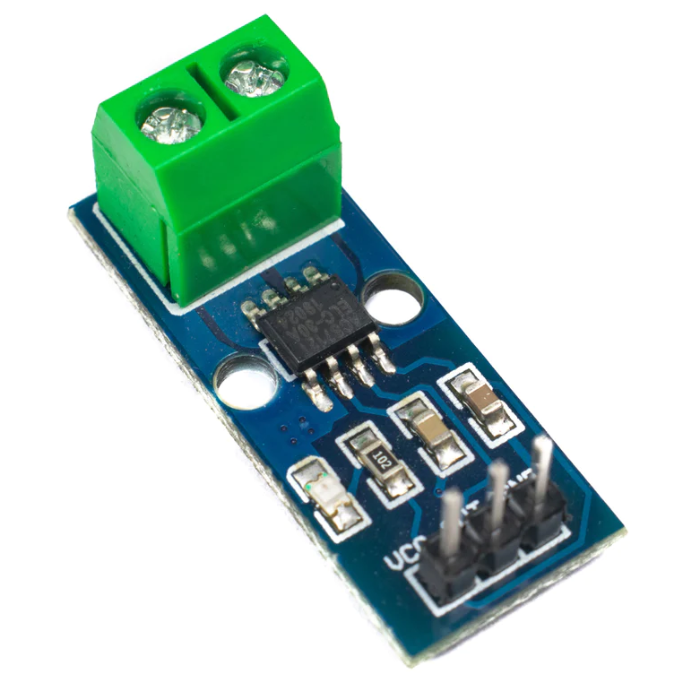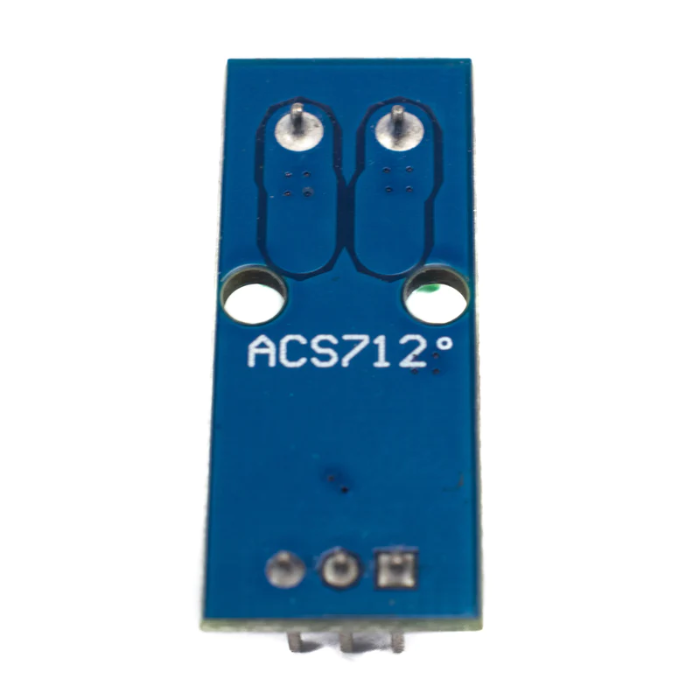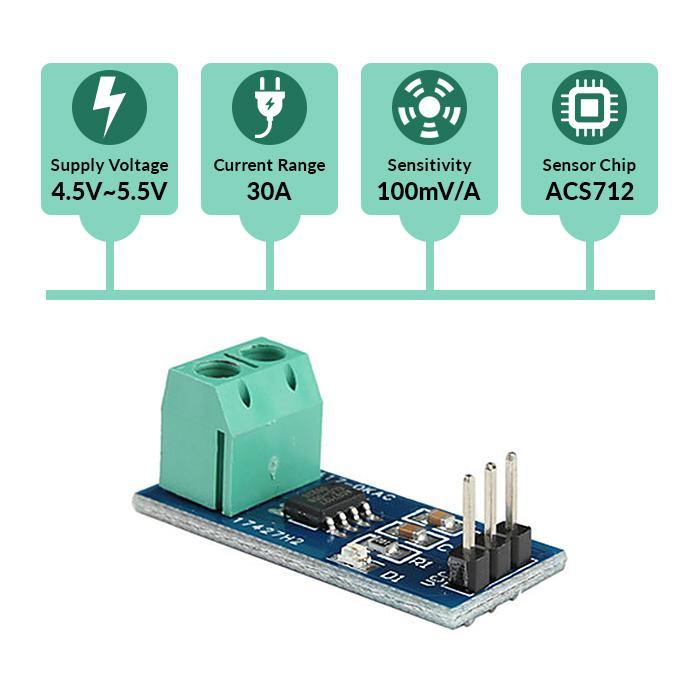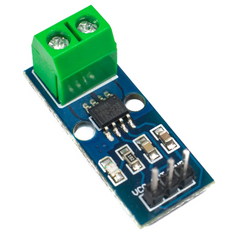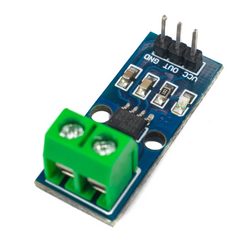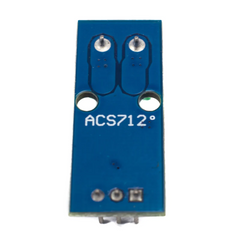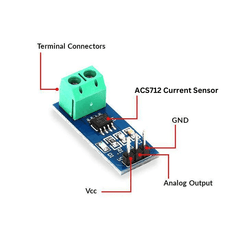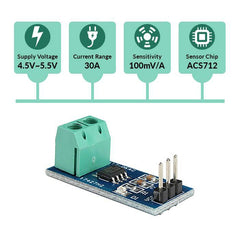30A ACS712 Current Sensor
The 30A ACS712 Current Sensor consists of a precise, low-offset, linear Hall circuit with a copper conduction path located near the surface of the die. Applied current flowing through this copper conduction path generates a magnetic field in which the Hall IC converts into a proportional voltage.
Sensing and controlling current flow is a fundamental requirement in a wide variety of applications including, over-current protection circuits, battery chargers, switching mode power supplies, digital watt meters, programmable current sources, etc.
Connection Diagram of Arduino Uno with Current Sensor :
Fig: Connection of ACS712 Current Sensor with Arduino UNO
Curve of relation between the DC input voltage and measuring current:
Fig: Output Voltage vs. Sensed Voltage



